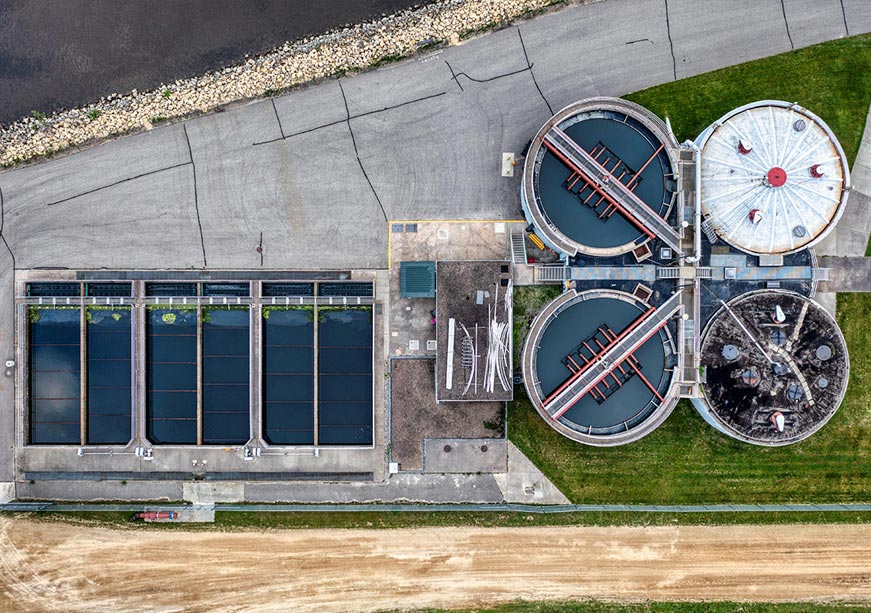-
CENTRES
Progammes & Centres
Location
As climate-driven extreme events are on the rise, Indian cities must adopt sustainable and adaptive water management to tackle them

Image Source: Pexels
This article is a part of the essay series: World Water Week 2025
Over the last few years, notable changes in climatic conditions have been observed. Some regions are experiencing higher temperatures, prolonged heatwaves, and drought-like conditions, while others are receiving severe cyclonic storms and excess rainfall. These changes are impacting life forms, natural habitats, and resources in various ways.
Human activities that are being conducted with minimal regard for the environment are adversely impacting it. For example, the high consumption of fossil fuels in the transport, power, and industrial sectors emits large quantities of greenhouse gases, warming the atmosphere and affecting the ecosystem.
The changes in temperature and rainfall patterns have led to the emergence of water management-related issues. For example, the demand for water increases during the summer season, and more water is used to minimise the harmful effects of air pollution. Conversely, the excess precipitation calls for better management.
The changes in temperature and rainfall patterns have led to the emergence of water management-related issues.
In India, several issues emerge in this context. Despite the availability of abundant fresh water, a substantial segment of the population does not have access to an adequate quantity of water. Generally, in cities, treated water is typically supplied through pipelines for only about one or two hours, or less, per day. The situation is far more critical in informal areas inhabited by poor communities, where access to treated water remains sporadic and families struggle to collect water for their daily needs. Thus, in Indian cities, while treated water is being supplied, a large population spends considerable time and energy collecting water.
Secondly, deficiencies are noted in the management of rainwater. Large parts of the country receive rain during the monsoon seasonhowever, the drainage systems in cities are unable to efficiently drain out the rainwater. This leads to flooding and waterlogging in public places, roads, residential and work areas, schools and hospitals. During such periods, people’s mobility is severely affected, and access to essential civic services is disrupted. These events often lead to numerous incidents of injuries, loss of lives, and property damage.
The mountainous regions of India, which experience frequent cloudbursts, torrential rains, and landslides, witness large-scale destruction and loss of life. A recent example in this regard is of Uttarakhand state, where the settlements of Dharali and Harsil were devastated on 5 August 2025. Several people lost their lives, over a 100 are reported missing, and many buildings were destroyed by the water and debris.
Conventional approaches to water management are insufficient to prevent the disasters triggered by extreme weather events. To address this, some measures need to be introduced:
In addition to the previously discussed issue, several other critical issues must be addressed. First, when a river receives excess rainwater and debris, it often overflows or changes its course, inundating neighbouring areas. It should be ensured that buildings are not constructed in such areas and the byelaws are not violated. Communities in such areas should be relocated to nearby, safer locations permanently. Another area requiring attention is improvement in weather forecasting using satellite imagery, radars, and artificial intelligence. Timely dissemination of upcoming weather information to communities can help save lives and minimise the damage. Also, during the occurrence of extreme weather events, communities and the local administration are unable to take proper decisions and steps for their protection. Thus, they should be equipped with survival kits and trained in the use of techniques, such as swimming and protection from electrocution.
The prevailing conditions not only call for better management of water but also for conducting human activities in a responsible and environmentally friendly manner.
To conclude, water-related problems have been aggravated by the climate change phenomenon. The long-duration heat waves in some places have escalated the water demand. Other places are grappling with frequent and intense flooding and waterlogging. Both situations are adversely impacting human settlements and people’s activities. The poor communities living in vulnerable areas suffer the most. The prevailing conditions not only call for better management of water but also for conducting human activities in a responsible and environmentally friendly manner.
The emerging challenges of water can be addressed by implementing sustainable projects and strengthening governance practices. Upgrading the drainage system can ensure swift transfer of stormwater, natural and artificial sponges can slow down surface runoff, and underground water basins can store excess rainwater. Along with these measures, the administration must ensure planned development of habitations, provide timely weather alerts to communities, and build community resilience to disasters. Implementation of these measures can help in minimising the damage and loss during extreme weather events.
Rumi Aijaz is a Senior Fellow with the Urban Policy Research Initiative at the Observer Research Foundation.
The views expressed above belong to the author(s). ORF research and analyses now available on Telegram! Click here to access our curated content — blogs, longforms and interviews.

Rumi Aijaz is Senior Fellow at ORF where he is responsible for the conduct of the Urban Policy Research Initiative. He conceived and designed the ...
Read More +